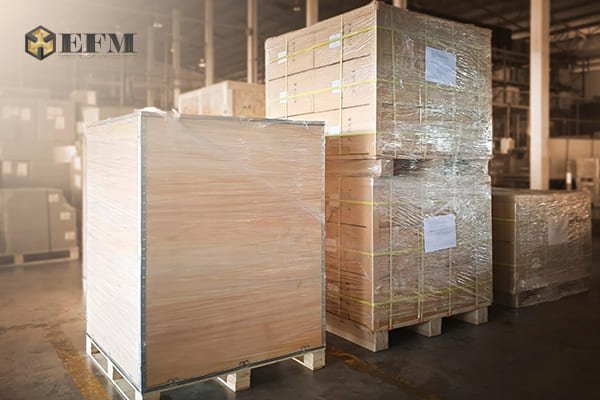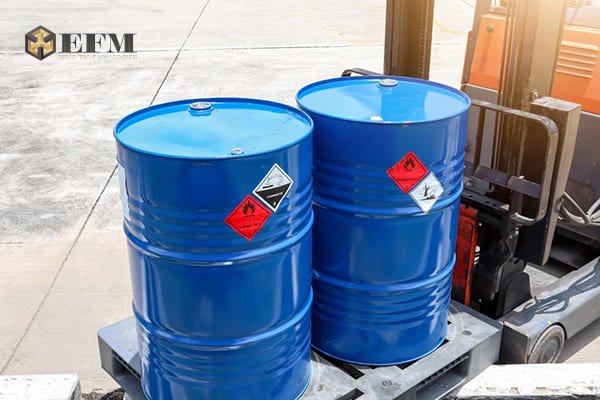Sea Freight Packaging Standards

In sea freight, proper packaging is necessary to protect goods from damage. It also ensures regulatory compliance and prevents costly delays in the supply chain. This guide outlines the key standards and practices for packaging goods.
1. Key Regulations and Standards
Compliance involves two types of standards: mandatory government rules and key industry practices. Both are critical to reduce risk.
1.1. Mandatory Government Regulations
Ignoring these rules can lead to customs holds, fines, or rejection of your shipment during customs clearance.
- International Standards for Phytosanitary Measures No. 15 (ISPM 15) for Wood Packaging
- The ISPM 15 is a globally recognized standard designed to prevent the spread of pests. Here, all solid wood packaging material (WPM) must be heat-treated or fumigated. After treatment, the material must carry the official ISPM 15 mark. However, this does not apply to processed wood like plywood or particleboard.
- International Maritime Dangerous Goods (IMDG) Code for Hazardous Materials
- The IMDG Code applies when shipping any material classified as hazardous. This includes obvious items like chemicals and batteries. It also covers less obvious goods, like aerosols and some perfumes. When shipping dangerous goods, its packaging must meet stringent UN specifications. Said packaging must also be correctly labeled with hazard pictograms.
- Further Reading: How To Ship Dangerous Goods
1.2. Industry Construction Standards
The following standards aren’t mandated by governmental regulations. However, some carriers and insurers may deny damage claims if they are not met.
- ASTM International
- Publishes technical standards for the construction of various shipping containers. E.g. ASTM D6251 for plywood-cleated boxes and ASTM D6039 for wood crates.
- National Wooden Pallet and Container Association (NWPCA)
- Widely recognized as the industry benchmark. NWPCA provides guidelines for the manufacturing and use of wood packaging.
2. Packaging Material Requirements
The packaging material used must be able to withstand the rigors of sea transit.
- Strength and Durability
- Packaging must be strong enough to support the weight of cargo stacked on top of it in a container.
- Moisture Protection
- High humidity is a constant in ocean transit. Use of water-resistant materials, liners, or desiccants is crucial for moisture-sensitive goods.
- Shock Absorption
- Use cushioning materials to protect goods from vibration and impacts during handling.
3. Common Packaging Methods

Corrugated Boxes (Cartons)
Suitable for light to medium-weight goods. Boxes should be high-quality and rated for the weight they will carry. To prevent cargo from shifting during transit, all empty spaces should be filled. Additionally, sealing should be done with heavy-duty packing tape.
Wooden Boxes and Crates
Used for heavy, high-value, or sensitive equipment. The crate itself must meet industry construction standards. Item within should be securely braced.
Pallets
The primary method for unitizing cargo. Goods should be stacked squarely on the pallet, with heavier items at the bottom. The entire load must be secured with stretch wrap and/or straps.
Bags and Sacks
For bulk or powdered goods, bags must be durable and resistant to punctures. The sealing method must be sufficient to prevent any leakage.
4. Labeling and Marking Requirements
Clear, correct marking is critical for identifying cargo and ensuring proper handling. Every package should display:
- Shipping Marks
- Includes the consignee’s name or symbol, port of discharge, and package number (e.g., “1 of 10”).
- Informational Marks
- The gross and net weight, country of origin, and dimensions of the package.
- Handling Marks
- This refers to internationally recognized pictorial symbols indicating handling requirements. E.g. “Fragile” (wine glass), “This Way Up” (arrows), or “Keep Dry” (umbrella).
5. Packaging Size and Weight Specifications
Package cargo to optimize space within a standard shipping container. This reduces cost and minimizes movement during transit. Individual packages must be within the safe lifting limits of handling equipment. Ports and warehouses may reject overly heavy packages that pose a safety risk.
6. Special Cargo Packaging

Certain goods have specific packaging needs that go beyond standard requirements.
- Liquid Goods
- Containers must have a 5-10% ullage (empty space) to allow for thermal expansion. Lids must be tightly sealed and reinforced.
- Powdered Goods
- Must be packaged in sift-proof containers or bags to prevent leakage.
- Dangerous Goods
- Packaging must strictly adhere to all IMDG Code regulations for the specific substance. This is non-negotiable and requires specialized expertise.
Freight Forwarding

Sea freight packaging standards are complex and unforgiving. This is where a freight forwarder’s expertise becomes crucial. An experienced freight forwarder will:
- Provide Expert Guidance
- Offer guidance on the right materials and methods for your products.
- Ensure Regulatory Compliance
- Ensure your packaging complies with mandatory rules, such as ISPM 15 and the IMDG Code.
- Manage Documentation
- Prevent customs holds and fines by handling all necessary paperwork correctly.
- Coordinate Logistics
- Work with carriers to ensure your goods travel safely from warehouse to destination.
A freight forwarder protects your investment by managing the critical details. This prevents costly fines, cargo damage, and supply chain disruptions. Always consult your freight forwarder before you ship. Confirm that all packaging requirements have been met.
Conclusion
Proper packaging is your cargo’s first line of defense in sea freight. Here, success depends on following a precise framework of rules. This framework covers government regulations, material requirements, and handling protocols. Any oversight can lead to serious consequences. These include customs rejection, financial penalties, and even irreversible damage to your goods.
While this guide provides the blueprint, flawless execution requires expertise. An experienced freight forwarder removes this guesswork. They protect your shipments, ensure compliance, and prepare them for transit. This partnership ensures your shipments are protected and compliant, securing your supply chain.
For nearly two decades, Express Freight Management has been the trusted partner for businesses shipping between the United States and Southeast Asia. We handle the technological complexity for you, managing everything from carrier selection and customs clearance to warehousing. Discover a streamlined approach to logistics with Express Freight Management for your shipping needs between the United States and Brunei, Cambodia, Indonesia, Laos, Malaysia, Myanmar, Philippines, Singapore, Thailand, and Vietnam today!
